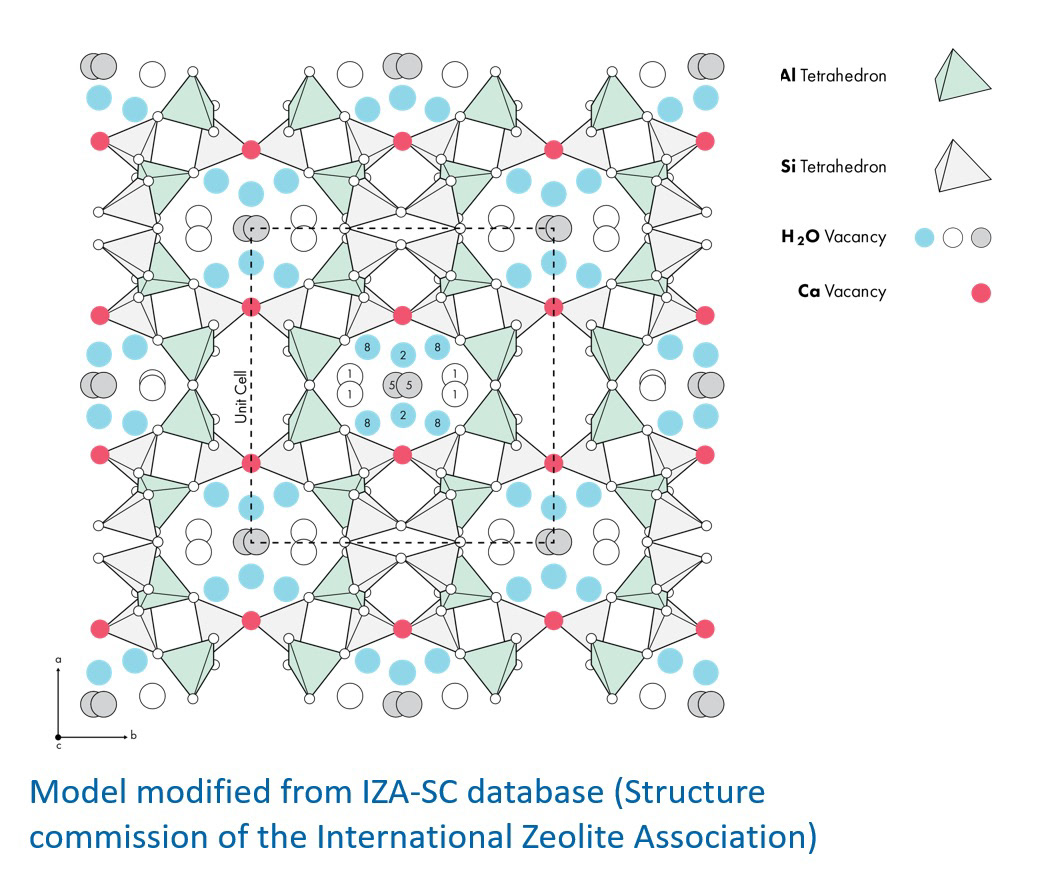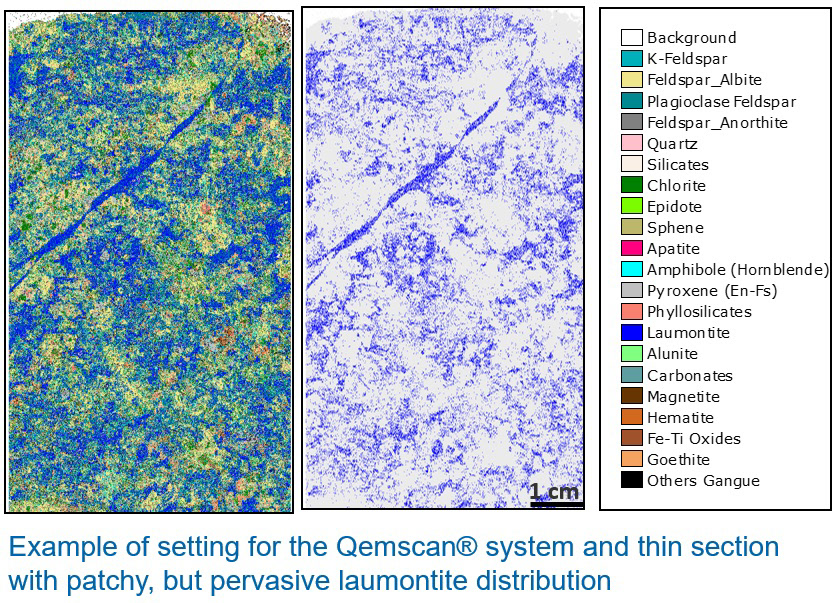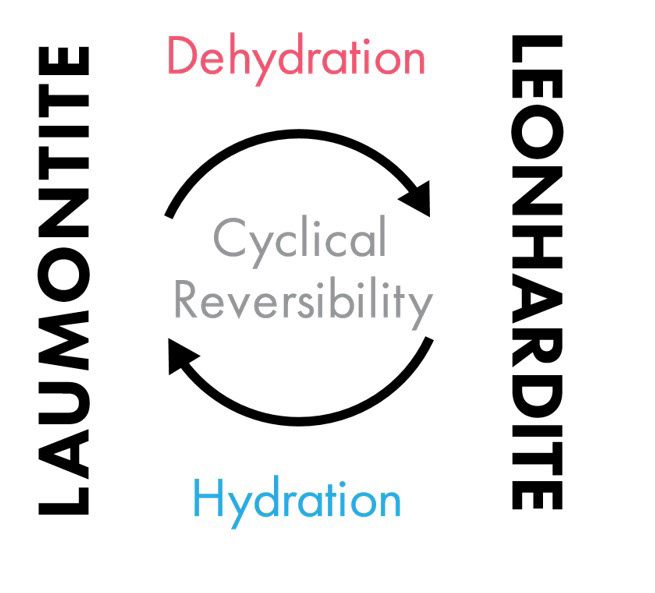PROJECT 1.- Leonhardite-Laumontite transition effects in Andesites and volcanoclastic rocks from Central Chile
The research focused in identifying the observable effects in concrete samples, due to its high concentration of calcic zeolites (Laumontite) and for that was useful identified first the presence of this zeolites by semiquantitative X-ray diffraction and automated mineralogical analyser (by Quescan) and after use an adaptation of the common test used in Etytene glycol exposure.
Laumontite is an aluminosilicate of hydrated Calcium, that forms silicon and aluminum tetreahedrons bonded with Oxygen atoms. Leonardite and Laumontite have this cyclical effect due to the channels allowing easily the entrance of water molecules. The Hydratation/drying process generate a deterious effect on concrete.
The identification of zeolites by optical microscopy is only possible for large crystals, which are not a regular occurrence in the very low temperature altered andesites of central Chile. XRD analysis permits the easy identification of the zeolite, but restrains itself to obtain the information on any preferred orientation of laumontite. However, semi-quantitative Rietveld modeling will include any very fine-grained – submicroscopic – laumontite. To obtain greater textural information, an automated microchemical analysis was tested as a possibility to visualize the distribution of laumontite down to a resolution of 2 µm.
When evaluating both techniques, it is concluded that a combination of the two semi-quantitative methods are considered recommendable to obtain information on the presence of sub-microscopic laumontite as well as gaining a visual impression of the textural arrangement of the zeolite in the rock.



Project 2.- The faujasite-X synthesis
Microphotography of the Faujasite X synthesis, Concepción 2009.



